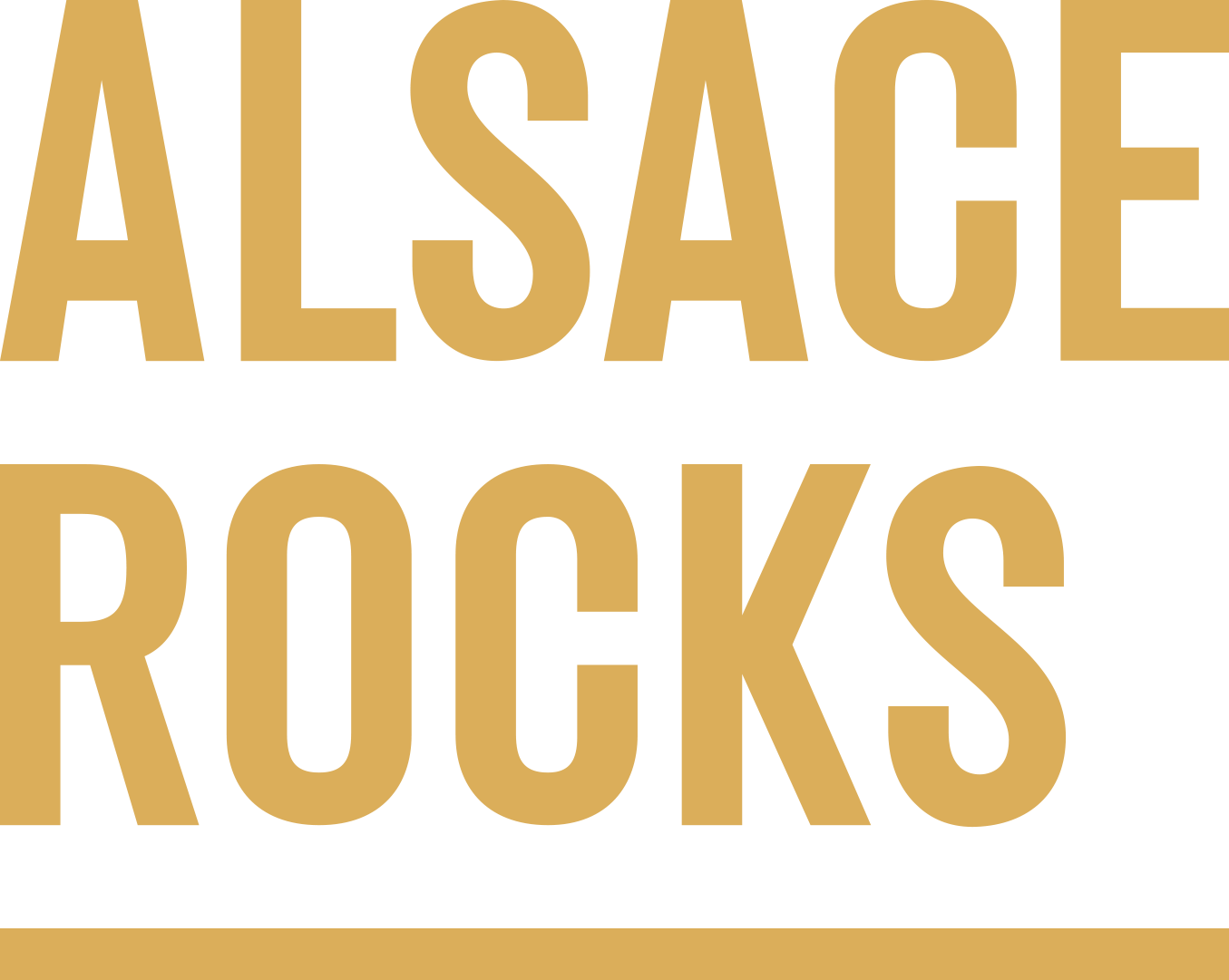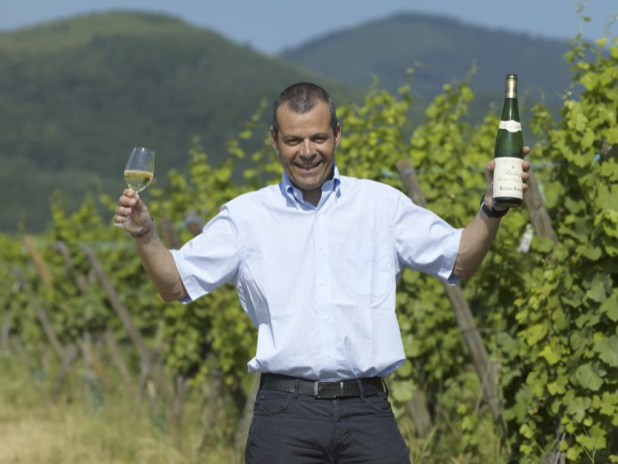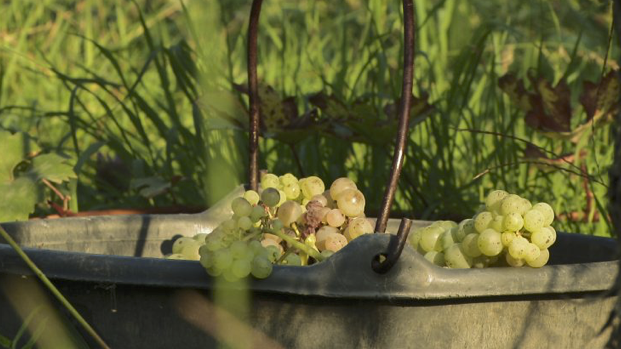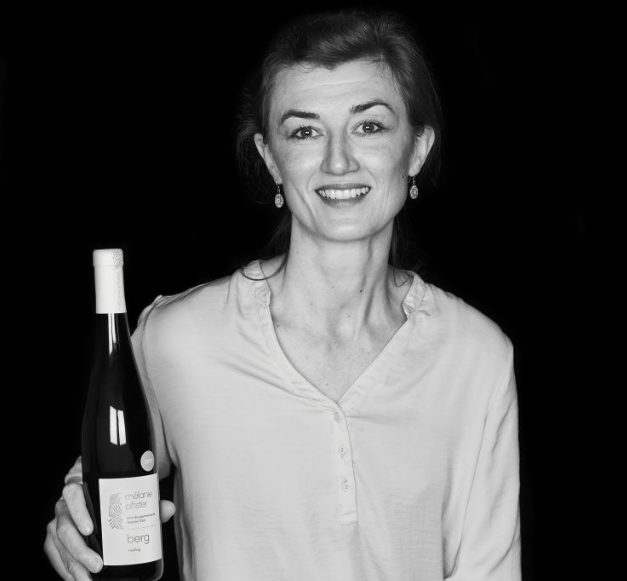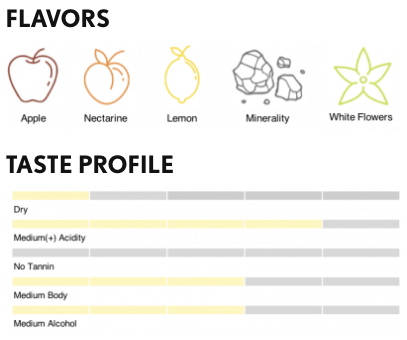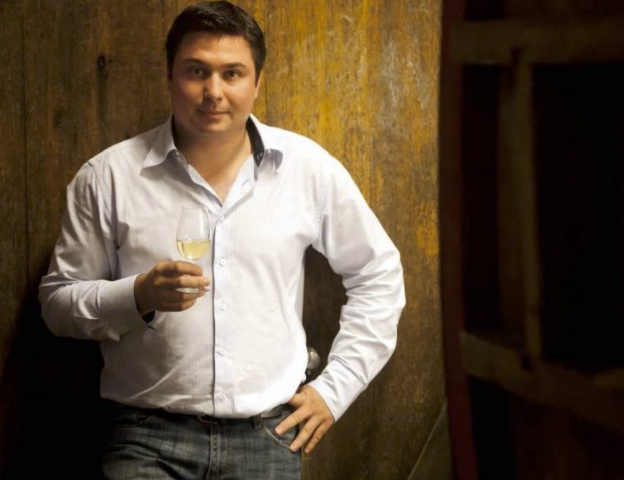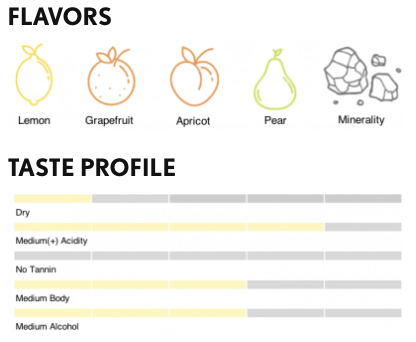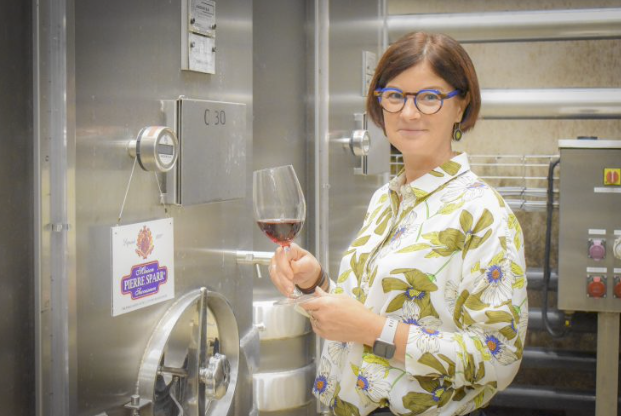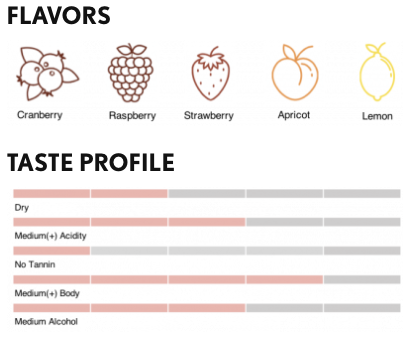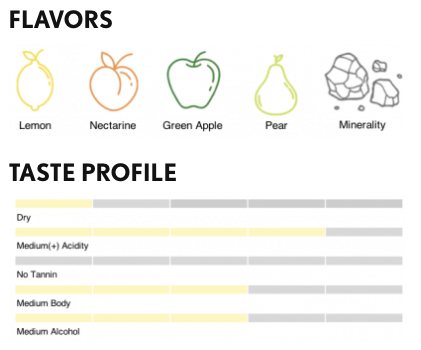Photo Credit: Vins d’Alsace
Nearly 250 miles east of Paris along the border of Germany lies a wine region with rich history, fairy-tale charm, and a youthful energy unlike any other. This is Alsace, a small region synonymous with terroir-driven aromatic white wines that have captured the attention (and palates) of wine lovers all over the world. Alsace’s quaint villages are dotted with church steeples, trickling fountains, and traditional half-timbered buildings with flower-filled window boxes—all backed by miles of vines. But scratch beneath the surface and you’ll discover a community of passionate winemakers who are committed to marrying centuries-old tradition with cutting-edge innovation. Here’s what to know.
The Growers & Makers
Georges Lorentz | Photo Credit: Maison Gustave Lorentz
Alsace is home to nearly 4,000 winegrowers. While there are plenty of newcomers to the scene, winemaking in Alsace is largely a family business—some have been making wine for as many as 15 generations.
For Antoine Barthelmé of Domaine Albert Mann, in Wettolsheim, an emphasis on quality unites young winemakers and the generations before them. “It’s something that is passed down and learned,” he says.
At the same time, many of these young winemakers are bringing new and diversified experiences to the region, including sustainable techniques in the vineyard and cellar.
“The young winemakers are well trained in schools and universities and have traveled and worked in vineyards in the U.S., New Zealand, Australia, and beyond,” says Georges Lorentz, of Maison Gustave Lorentz in Bergheim. “The younger generation is more curious and open to innovation, natural wines, and modern packaging. They are not seeking to be the biggest, but rather, to make the wine they want on a more boutique, small-batch scale.”
Producers in Alsace have unique styles and specialties. But they demonstrate a shared commitment to expressing the full potential of the terroir, to caring for the land, and enjoying the wine in the same manner they have for generations—over meals, with friends and family.
The Land
Photo Credit: Vins d’Alsace
Alsace is protected by the Vosges Mountains, which keep rain and clouds at bay, ensuring sunny summers and dry autumns—ideal conditions for the ripening of grapes. What’s more, the region’s diverse range of soil types—chalk, clay, limestone and granite to sandstone, schist and volcanic rocks—allow viticulturists to match the grape varieties to the soils for which they’re best suited, producing a range of styles from light-bodied and fresh to full-bodied and bold.
“The Alsace vineyard has all geological formations, from the primary era to the quaternary period,” says Barthelmé. “It’s the only one in the world with this unique composition of 13 different mother soils.”
The vineyards run north to south, with the best quality vineyards situated on steep slopes and boasting east and south-east facing aspects. And with its dry, sunny climate, this northeastern region is also one of the greenest wine-producing areas in France, with one-third of all vineyards certified organic, biodynamic, or in conversion.
“At a time when consumers are more socially conscious about sustainable practices in the vineyard, many don’t even realize that Alsace was one of the earliest adopters of organic, biodynamic, and sustainable viticultural practices,” says Hai Tran, a Philadelphia-based sommelier. “In fact, France’s first certified biodynamic winery was Alsace’s Eugène Meyer.”
In a country where climate change presents a wave of new challenges for winemakers, Alsace producers are uniquely positioned to navigate an uncertain future.
Photo Credit: Vins d’Alsace
“Our deep commitment to organic viticulture will help us maintain a high level of biodiversity in our vineyards in the future, as well as the liveliness of the microbiological life in our soils, which affects the level of minerality and complexity,” says Lorentz. “We’re also planting rye and peas to retain water in the soil and prevent drought. And when necessary, we can keep more leaves on the vines to protect against intense sun.”
Adds Etienne-Arnaud Dopff of Dopff Au Moulin, in Riquewihr: “The tradition of respecting the soil is ingrained in Alsace. Preserving the integrity and profile of our different grape varieties are among our main concerns,” he says. He has started a study to determine which grapes are better suited to the soil and the changing climatic conditions. “So we are better prepared for the future and to adapt to changing conditions,” he explains.
Grapes and Wines
Photo Credit: Vins d’Alsace
Just as Alsace producers have a deep respect for their soils, they also have a strong reverence for regional grape varieties. Growers and makers here have long turned to specific grape varieties for the way they capture the nuances of the soil and transmit a sense of place.
Alsace has an astounding 53 AOCs, including AOC Alsace, AOC Crémant d’Alsace (traditional method sparkling wine), and 51 individual Grand Cru AOCs. Fortunately for the consumer, wines are labeled by grape variety rather than AOC—a unique labeling feature in France—making it easier to navigate the wide variety of wines and styles.
In Alsace, 90 percent of the wine produced uses white grapes, specifically the seven main varieties: Riesling, Pinot Gris, Pinot Blanc, Gewurztraminer, Muscat, and Sylvaner. Among these grapes, only four are considered “noble” and are allowed in Grand Cru wines—Riesling, Gewurztraminer, Pinot Gris, and Muscat. By and large, these white wines are aromatic, dry, and unoaked, with the exception being the region’s renowned sweeter styles including Vendanges Tardives (late harvest wines) and Sélection de Grains Nobles wines, which result from botrytized grapes.
While white wines may currently steal the show, Pinot Noir is playing a growing role in Alsace winemaking. The grape accounts for around 11 percent of all plantings and is used for still wine and Cremant d’Alsace. The growth in Pinot Noir can be partly attributed to younger winemakers bringing new knowledge from outside regions and increasing experimentation with the variety as a still wine. Additionally, rising temperatures during the growing season have allowed for improved ripening of this cool-climate grape.
“I believe that the Pinot Noir grape has a brilliant future in Alsace considering the global warming effect and the know-how that producers have developed over the years,” says Lorentz.
Tran agrees: “Due to the region’s climate, I have found that Alsace Pinot Noir tends to showcase an opulent combination of tartness and juiciness, with prominent red fruit underlined with hints of spice, supported with soft textural tannins, and offering mouth-watering acidity,” he says.
From sweet to dry, the still wines of Alsace are noted for vibrant fruit, freshness, and wonderfully balanced acidity. But there’s yet another standout style from this diverse region—Crémant d’Alsace. This sparkling wine style, produced in the traditional method, results from a range of regional grapes. The majority of blends will feature Pinot Blanc, Pinot Gris, or Riesling; however, Chardonnay is also permitted (solely in the case of Crémant), and all Crémant d’Alsace rosés are 100 percent Pinot Noir.
“One of the best things about Crémant d’Alsace is its value,” says Tran. “As a result, you can enjoy it on all occasions without feeling guilty, and conversely, you can open it for a special occasion and it will still impress.”
Perfect Pairings
Photo Credit: Vins d’Alsace
The story of wine in Alsace cannot be told without mentioning the food—specifically its role in complementing and intensifying the flavors in the region’s wines. (There’s a reason Alsace has 30+ Michelin-starred restaurants, more than any other region in France!).
White wines from Alsace are not limited to light fare and seafood. Rather, the spicy, denser styles of Pinot Gris and Gewurztraminer pair well with poultry, sausages, mushroom dishes, veal, and other rich cuisine. Riesling can frame pork or scallops equally well, and the ever-tricky asparagus washes down easily with a local Muscat.
“The versatility of the wines from this region is exceptional and the value is something that wine lovers can really get behind,” said Jenni Wagoner, Group Wine Director for Zuma and Oblix, Global. “I love spicy Thai and an off-dry Gewurztraminer. There is something quite compelling about a dish with a bit of kick and that textured aromatic lychee deliciousness of Gewurztraminer from this region. And I would certainly enjoy a Pinot Noir from Alsace with everything from burgers and robata-grilled beef skewers to a simply grilled salmon filet.”
And while the wines pair beautifully with local specialties—try a meat pie with Pinot Gris, choucroute with Riesling Grand Cru, a baeckeoffa meat stew with Pinot Noir, or tarte flambée with a Pinot Blanc—they also complement a dazzling array of international flavors.
Because of the wines’ pairability, versatility, and terrific quality for price, many sommeliers find that consumers will ask for them time and time again. “Alsace is an exciting playground for winegrowers and winemakers,” says Dopff, “but it’s just as exciting for consumers.”
VINTNER SELECTIONS
Domaine Mélanie Pfister ‘Berg’ Riesling 2019
Mélanie Pfister| Photo Credit: Domaine Mélanie Pfister
WINEMAKER NOTES
The acronym Berg comes from Auf dem Berg and Silberberg, two neighboring hillside vineyards. The vineyard soils are a variation of France’s famous argile-calcaire mix, or clay-limestone mix. The clay gives the Riesling body while the calcareous limestone gives finesse, focus and length. The Pfisters farm six plots of Riesling to make the Berg cuvée, totaling 3.18 acres.
This wine is made and aged in tank on its fine lees for a minimum of one year. Fermented bone dry.
Production averages 900 cases annually.
ABOUT DOMAINE MÉLANIE PFISTER
Domaine Pfister began life in 1780 during our Revolutionary War. That seems a long time ago, until you learn that Pfister’s village of Dahlenheim was favorably noted for wine production in the distant year of 884. A written record has survived, detailing how the village supplied wine to the Abbey of Saint Michel de Honan during that era. Dahlenheim was an important center of wine production throughout the Middle Ages as well. It’s located due west of Strasbourg in the northern reaches of the Bas Rhin (legally, a separate department from the Haut Rhin, and meaning, simply, lower down the Rhine River—but keep in mind that the Rhine flows north to the Baltic).
This is Riesling country. Up here the Vosges Mountains are not nearly so toweringly majestic, nor, correspondingly, so protective. Dahlenheim itself is nestled in the flank of the great Engelberg hill, due west of Strasbourg, and has no vines on the Rhine plain. Its vineyards are not as shielded from cold weather as further south in the Haut Rhin, and this cooler climate, along with the abundance of hillsides and of limestone and less sandy soils, favors Riesling and makes for particularly elegant, mineral renditions of the wine. Mélanie Pfister makes two Rieslings, both entirely dry. Berg, the first, comes from the limestone hillside adjacent to Engelberg, making for a wine that is tantalizingly full, rich, and piercing in its drive. The other one is from the grand cru of Engelberg, a wine whose endless fields of white flowers and orchard fruits, to say nothing of its electric minerality, makes you sit up straight.
If you like wines marked above all by purity of fruit, elegance, and character (to say nothing of reasonable pricing), you have come to the right place. Mélanie and her father farm 43 parcels totaling ten hectares (twenty-five acres) of vines, twenty-five percent of which is in Riesling. Mélanie “officially” took over from her father with the 2006 vintage, but dad is far from retiring. He very proudly has got his daughter’s back and works the vines as hard as he ever did. He just no longer sweats the cellar work.
Joseph Cattin Riesling 2018
Jacques Cattin Junior| Photo Credit: Joseph Cattin
WINEMAKER NOTES
Limited yields. Guyot pruning, with 5 500 vines per ha on average. Sustainable farming practices to preserve the richness of our terroirs.
Gentle, whole-cluster pressing in stainless-steel tanks. Aged for a minimum of 6 months in old oak barrels.
An exceptionally dry Riesling with crisp citrus aromas. Ideally paired with raw fish and fresh seafood.
ABOUT JOSEPH CATTIN
the year 1720. The family settled in the village of Voegtlinshoffen, south of the Alsace wine capital of Colmar, where they immediately planted vines and began the viticultural legacy that continues today. The domaine is named for Joseph Cattin, who became renowned for his pioneering work in grafting that is widely credited for saving some of the region’s best vineyards from phylloxera.
Today, the estate is run by Jacques and Jean-Marie Cattin, as well as the latest generation, Jacques Jr. The family owns 160 acres of vines planted to all traditional Alsace varietals, and have two separate wineries — one of which is dedicated solely to the production of their incredible Crémant wines.
Pierre Sparr Cremant d’Alsace Rosé
Corinne Perez, Cellar Master at Pierre Sparr
WINEMAKER NOTES
Certified organic and hand-harvested. First fermentation occurs in temperature-controlled, stainless steel vats. Six months later, still wines are blended to achieve the distinctive flavor profile of the rosé. Blended wine is then bottled with a specific yeast added to initiate the second fermentation in bottle. The wine rests on the lees a minimum of 18 months prior to disgorgement. Finally, the dosage is added to provide the particular brut style of this sparkling wine.
ABOUT MAISON PIERRE SPARR
The origin of the winemaking family Sparr goes back to 1680, as Jean Sparr was born. Under the influence of François Pierre Sparr in 1785 the vineyards were increased. Generations later, Charles Sparr developed the business, increasing the activities on the area of trade and regarding wine ageing. His son Pierre took the succession at the age of 20. His distinct sense for business made him a pioneer of the “estate bottling” of wines in Alsace. His motto was: “invest, progress and maintain”.
During WWII Sigolsheim and its vineyards have been completely destroyed. With a lot of courage and obstinacy Pierre Sparr rebuilt one of Alsace’s most beautiful and prestigious Domaines. His sons René and Charles contributed to the enlargement of the vineyards and the development of the European markets which gave a new dimension to the company. Nowadays, with the help of the 9th generation, the aim is still to perpetuate tradition, passion and emotion.
ABOUT CORINNE PEREZ
Corinne Perez was born in Lyon, a well- known city located north of the Rhône valley, between Beaujolais and Crozes Hermitage vineyards. During her Agriculture studies in Lyon, she was introduced to winegrowing and winemaking as a student harvest intern in Beaujolais. Corinne fell in love with wine and winemaking and pursued her new passion in Dijon where she earned her DNO degree (oenologist national diploma) in 1994. To diversify her experience and palate, Corinne worked harvest in both Oregon and Australia. While her initial work was with full-bodied red wines, her first consulting job in Alsace exposed her to the world of white wines.
Corinne was seduced by the finesse, elegance and purity of white wines, whose vinification leaves no room for error. Since 2003, she has been a winemaker in Alsace and she was appointed head winemaker at Pierre Sparr at the start of 2020. Corinne thrives on the diverse aspects of being a winemaker, from collaborating with the cellar team, to blending, to monitoring vine and grape development in the summer and early fall, and even the endless analysis that is an integral part of winemaking.
Domaine Ostertag Pinot Noir Les Jardins 2017
Arthur Ostertag | Photo Credit: Domaine Ostertag
WINEMAKER NOTES
Certified organic and biodynamic. All vineyard work and harvesting is done by hand and uses no chemical fertilizers, herbicides, or pesticides. Ages in stainless steel tanks for 9 months.
Offers vibrant fruitiness that is achieved with soft vinification and brief élevage in stainless steel. This is an absolutely delicious Pinot Noir to enjoy.
ABOUT DOMAINE OSTERTAG
After training in Burgundy, winemaker André Ostertag returned to his family domaine in Epfig and established Domaine Ostertag in 1966. He lowered yields considerably and introduced viticultural and vinification techniques he learned in other regions. In 1997, André began practicing biodynamic viticulture on his 35 acres of vineyards, including his flagship parcel in the Grand Cru Muenchberg. André produces three ranges of wines: the Vins de Fruit, which are expressive of the grape variety; Vins de Pierre, which showcase the terroir; and the Vins de Temps, which highlight overripeness or noble rot and can only come about through waiting. In addition to the Grand Cru Muenchberg, André also produces wines from four lieux- dits: Clos Mathis, Fronholz, Heissenberg and Zellberg.
Domaine Zind-Humbrecht Riesling 2018
Photo Credit: Domaine Zind-Humbrecht
WINEMAKER NOTES
Zind-Humbrecht draws from its palette of impressive vineyards to compose this wine. A dedication to terroir guides all winemaking practices, which include extended pressing cycles, abbreviated clarification cycles (to retain natural yeasts and proteins in the must), natural malolactic fermentation and extended aging on the lees. The wine is aged 8 months in 40-year-old French barrels.
A light, fully dry style of Riesling. The palate has a nice mouthfeel, with slightly lower acidity than usual, but the lower alcohol level keeps an elegant, fresh structure.
ABOUT ZIND-HUMBRECHT
With an unbroken winemaking lineage in Alsace since 1620, Domaine Zind-Humbrecht came by its current name in 1959 when Leonard Humbrecht married Genevieve Zind. Leonard was able to expand the winery’s collection of Grands Crus and other high quality vineyards, and since then, one of the hallmarks of every Zind- Humbrecht wine has been its overriding sense of terroir: the taste of the vineyard is always clear and unmistakable. The estate is managed by Olivier Humbrecht, one of the world’s only winemakers to attain MW status. His passion for Alsace wines and biodynamic farming translates into a portfolio of wines recognizable for their purity, intensity and faithful expression of each individual vineyard site.
